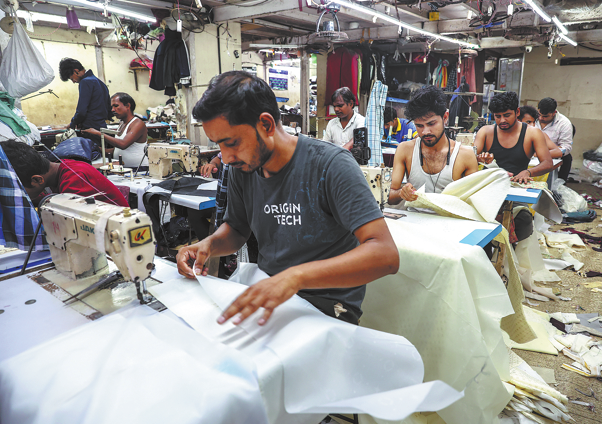India's relief measure seen as helpful for exporters, insiders say


The relief measures worth more than $5 billion announced by the Indian government late on Wednesday will help Indian exporters badly hit by tariffs imposed by the United States, with which it continues to negotiate a trade deal while seeking alternative markets, insiders said.
The support, approved by the federal cabinet chaired by Prime Minister Narendra Modi on Wednesday, comes by way of collateral-free loans worth $2.3 billion as well as the disbursal of $2.82 billion over six years through a specific program, Export Promotion Mission, or EPM, with the aim of strengthening India's export ecosystem.
The EPM would help boost India's export competitiveness, particularly for micro, small and medium enterprises, first-time exporters, and labor-intensive sectors, India's Information and Broadcasting Minister Ashwini Vaishnaw announced after the cabinet meeting.
The latest move marks a strategic shift from multiple fragmented schemes to a single, outcome-based, and adaptive mechanism that can respond swiftly to global trade challenges and evolving exporter needs, the minister said.
Indian exporters have been seeking relief since Washington imposed a total tariff of 50 percent on Indian exports, including a 25 percent punitive levy over New Delhi's purchase of Russian oil, which pushed up duties to as high as 50 percent on items such as garments, jewelry, leather goods and chemicals. India's labor-intensive textiles, leather, fishery, footwear, and gems and jewelry industries have been hit the hardest.
Exports and trade organizations, along with Indian experts, hailed the move, saying it will provide much-needed relief to Indian exporters.
The Federation of Indian Export Organisations President SC Ralhan said: "It reflects a pragmatic and forward-looking vision for India's trade sector. By bringing together financial and non-financial interventions under a unified framework, the EPM provides much-needed continuity, flexibility, and responsiveness to global trade dynamics."
"A much-needed measure that will ensure the textile and apparel sector becomes globally competitive, better placed to leverage the opportunities, diversify into newer markets, and be able to create more and better-quality jobs for our young people," the Confederation of Indian Textile Industry Chairman Shri Ashwin Chandran said.
India's textile and apparel exports to the US stood at nearly $11 billion in 2024-25. According to CITI's analysis, in September 2025, textile exports slid 10.45 percent over the previous year, while apparel exports declined 10.14 percent during the same period.
The move came at a most appropriate time as the Indian seafood industry was going through its most difficult phase, Pawan Kumar G, president of Seafood Exporters Association of India, said.
The US is the single largest market for Indian seafood exports.
EPM is a welcome step, but its success will depend on quickly issuing detailed guidelines, ensuring adequate funding, and establishing strong coordination mechanisms, according to Global Trade Research Initiative founder Ajay Srivastava.
On Monday, US President Donald Trump said his administration was working on "a very different deal" with India from those negotiated in the past.
The writer is a freelance journalist for China Daily.

































